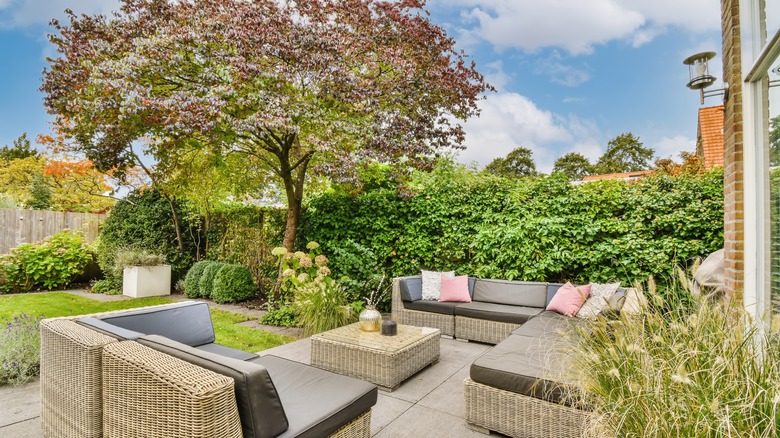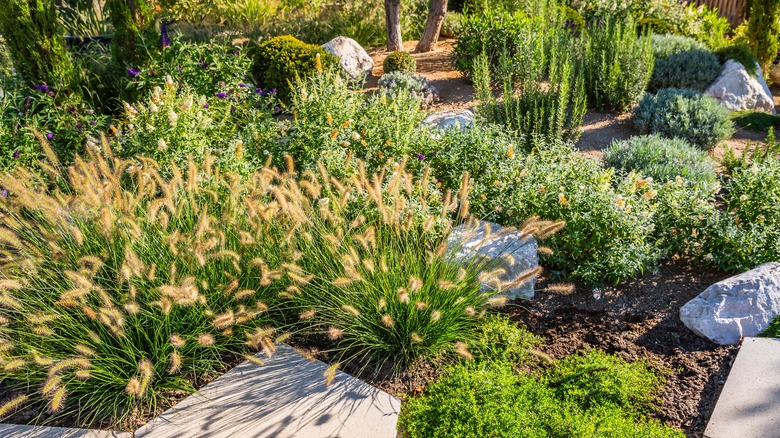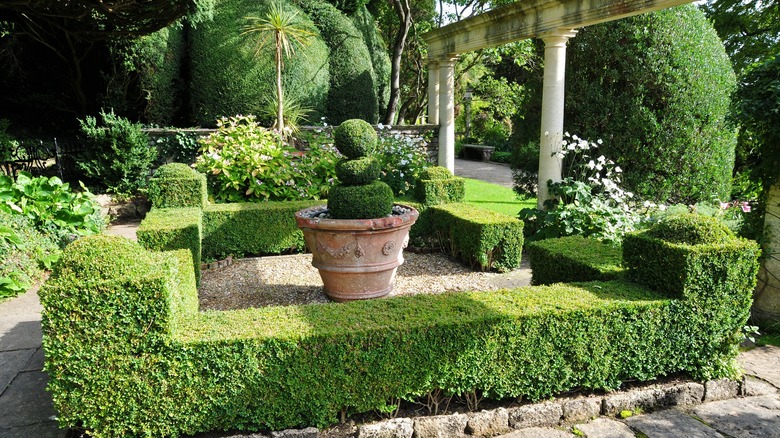Common Mistakes To Avoid When Using Trees And Shrubs For Patio Privacy
A great way to add some privacy to your patio is by planting trees and tall-growing shrubs in the ground or in large pots that you can position around the perimeter of your outdoor living space. In fact, using the right plants is one of the top three ways to make your backyard feel more private. Plus, other benefits are blocking out undesirable views and providing protection from strong winds and outside noises. Once you have the ideal tree and shrub selections, you'll find that you can create a beautiful oasis that is calm and relaxing, as well as pleasing to the eye.
But before you rush out to buy some plants for your patio privacy, there are some common mistakes that you want to avoid to ensure that you're creating a pleasant environment. Most mistakes are caused by incorrect plant selection. These can result in maintenance issues, lack of good aesthetics, plants that don't offer protection and privacy all year round, and plants that fail to grow and thrive. That's why you should plan your privacy screen first to ensure that you get a good mix of plants that will not only look amazing but also be easy to maintain. Let's take a look at why some of these common mistakes can cause problems and what you can do to avoid them.
Consider the maintenance of your patio privacy plants
When choosing plants for your privacy screen, first consider the plants that you want to use. One of the most common mistakes is not knowing the maintenance requirements of the plants you choose. It might be tempting to select plants that will grow quickly, but you have to remember that these plants will continue to grow and will need regular trimming and pruning. So, if you don't want to spend every weekend trimming your screening plants, stay away from fast-growing plants. Instead select columnar-type evergreen trees, such as conifers, cedars, or cypress trees for privacy.
The next mistake to avoid is not choosing a complementary variety of different plants. For example, having just one row of columnar trees as your screen could look quite bland and uninteresting. It's much better to complement these with smaller plants that you can position in front of the trees and to fill in spaces. Think of this exactly the same way you would plan a garden bed next to a fence. Taller varieties are planted at the back and smaller shrubs or ornamental grasses are planted at the front. You also want to avoid deciduous plants that will not provide any privacy over winter. Choose evergreens instead for year-round cover.
Make sure the plants suit the conditions
Another common mistake is choosing plants for patio privacy that won't thrive in the conditions that they're going to be exposed to. Take stock of how much sunlight your patio gets as this can help you with proper plant selection. If you're going to plant a row of evergreen trees at the back of your screen, will these shade smaller patio plants? If so, select plants that don't require lots of sun to thrive and grow. Consider shade-loving varieties such as hellebores or heucheras to add a bit of color and interest. These plants also grow well in pots, making them easy to move as needed.
You also don't want to neglect the water needs of the plants you're selecting. Remember that potted plants will generally need watering more often because the soil can dry out quite quickly. If watering regularly is going to be a problem, why not consider using some hardy succulents that only require infrequent watering? For shady spots, you could select from the best succulents that grow indoors. Lastly, you also want to consider how large your plants are going to get to ensure that you give them enough space to grow. You don't want to grow the trees too close together as this can result in sparse growth rather than creating a nice lush privacy screen.


